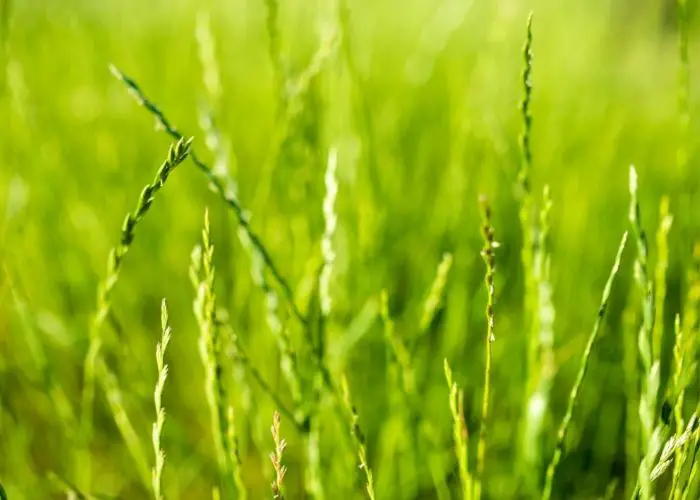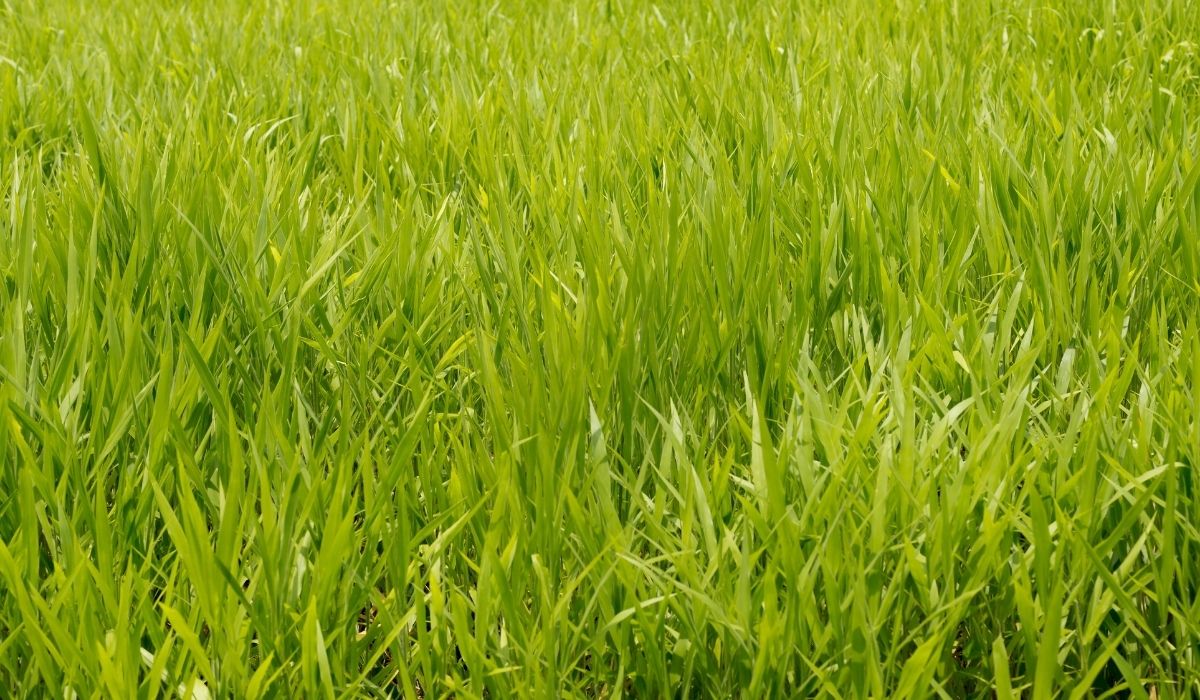Today, we’re going to be answering the question: “How long does it take for ryegrass to grow from seeds, and what conditions you should provide them?”
Ryegrass is an annual plant, and a member of the Poaceae family, but has many similarities to other types of grasses. The name “rye” comes from its grain-like appearance. It is a cool-season grass and is commonly found in prairie and savannah regions. It is drought tolerant and does well in sandy soil. Rye is generally grown for forage and is often used as a winter cover crop.
Contents
What is Ryegrass?
Rye is a cool-season grass and is most often found in prairie and savannah regions. It can be used in a variety of applications, including erosion control, seeding on marginal land, and growing for hay or silage.
Rye has been used as a cover crop for more than a century. Cover crops are often sown in late fall or spring and then mowed at the beginning of the following year to provide an annual source of green material. They are usually sown in areas where there is little or no residual soil moisture, and then mowed or grazed through the growing season. The green material left after mowing provides a habitat for beneficial insects and other organisms.
A wide range of benefits have been reported from using rye as a cover crop, including improved soil tilth, decreased soil erosion, increased nutrient cycling, increased organic matter content, and reduced nitrate leaching. Rye is a cool-season grass; cool-season grasses are those that can be sown in spring, and grow well in fall. Let’s see how long it takes for ryegrass to grow.
Learn more about How To Grow Grass On Hard-packed Dirt
How Long Does it Take for Ryegrass to Grow?
Ryegrass is a perennial. This grass is easily transported, so it can be put in the ground and then moved later if you need to. The average height of ryegrass is about 2-3 feet.
Ryegrass is a warm-weather plant and should be put in the ground in early spring or fall. It can tolerate cooler temperatures and some shade.
There are many different varieties of rye, each with its characteristics. Some varieties will grow to about 60 cm (24 inches) tall and produce medium-sized, medium-soft, red spring blades. Others have slightly hairy leaf blades.
Ryegrass germinates in about 7-14 days and stays green all year round. Presented with the right growing conditions, the ryegrass will mature in about 40 days. It needs plenty of moisture to germinate and grow.
Ryegrass grows in full sun and can tolerate some shade. Ryegrass prefers fertile soils to thrive.

Learn more about A Guide On How To Grow Grass In Az
Growing Ryegrass
Sow rye as soon as the soil can be worked
Sowing rye can be done by hand, or by machine. Choose a sunny, sheltered location where you can control the temperature of the seed. Rye is generally sown in fall and mowed in early spring. Sow the seed 2-3 cm (1-1 1/2 inches) deep, and at a spacing of 30-45 cm (12-18 inches). Cover the seed with fine soil.
Water the seed
Water the seed and press it down firmly to ensure that the seed is covered. It is not necessary to cover the seed with a seeding mulch, but it will help to keep weeds down. Rye is a cool-season grass, so it is best to water it only enough to keep the soil moist. If the soil is dry, it will cause the rye to bolt, and produce a large seed head.
Mowing the rye
Mowing the rye after germination will encourage a dense stand. The rye can be mowed at any time, but it should not be cut too short. However, a light cutting will encourage a vigorous stand.
Cutting when the plant is young will also reduce the weeds that spring up early. When the rye is about 12 inches tall, cut it back to 3-5 inches. The rye will regrow quickly and will provide a dense stand of green foliage for a few months. You can mow the rye as soon as it begins to grow again but leave it a little longer if you want it taller.
Insects and disease
Several pests will damage or kill rye. Let’s take a look at the most common culprits.
Caterpillars
Caterpillars can eat the leaves of rye. They are most likely to do this in early spring when the rye is just beginning to grow.
Slugs
Rye is not very attractive to slugs. They will usually not stay on the seedlings for more than a day or two. It is best to keep the grass free of slugs. If you find them on the grass, you can either remove them or spray them with slug bait.
Read more about How To Grow Thick Rhubarb Stalks?
Take Home – How Long Does it Take For Ryegrass to Grow?
Now that you know how long it takes for ryegrass to grow, it’s time to start growing: and this grass grows fast. In the right conditions, ryegrass can germinate in an little as 3 days! Ryegrass is a perennial. It will live for many years. So what are you waiting for? Let us know how you get on in the comments below.
Learn more about How To Grow Asparagus From Scraps
Frequently Asked Questions
What Month Should I Plant Ryegrass?
The best time to plant ryegrass is in fall or spring, when the soil temperature is 20°C or higher. If you plan to plant it in July and August, you can use a special planting mix that includes some nitrogen and phosphorous.
How Do You Make Ryegrass Grow Faster?
Fertilizers are a good source of nutrition for ryegrass and help to make the grass grow faster. If you want your ryegrass to grow faster, you can also add some compost and manure, but you should avoid adding too much nitrogen.
How Long Does it Take Ryegrass to Spread?
Ryegrass spreads quickly. It takes a month or two for ryegrass to spread from the time you sow the seed. The plants will have four to six leaves at that point. Ryegrass spreads best when it is about two months old. The roots of ryegrass are very shallow and they do not grow much deeper than one inch. This is why it's able to spread so fast.
Why is My Ryegrass Not Growing?
There are many reasons why ryegrass might not grow. Some of the most common reasons include: The soil could be too wet. Ryegrass does not like to be in the water. The soil should be moist, but not soggy. If the soil is too wet, you can try to add more mulch to keep the soil from getting wet. Another reason could be that the ryegrass is planted too deeply. Ryegrass is a shallow-rooted plant. You can plant it on top of flat ground or on a slope or on a hill. If you plant it too deeply, it will not get enough light. The final reason is that the soil may be too dry. Ryegrass likes to be moist. If the soil is too dry, you can try to add more mulch to keep this from happening.
A garden is a place that relaxes us and reflects our personal style, it’s a place to spend time with loved ones and grow our own fruits and vegetables. Maybe you’re looking for design inspiration or plant selection, or you’re concerned about garden privacy, shady areas, or pests, but don’t worry, you’ve come to the right place.
